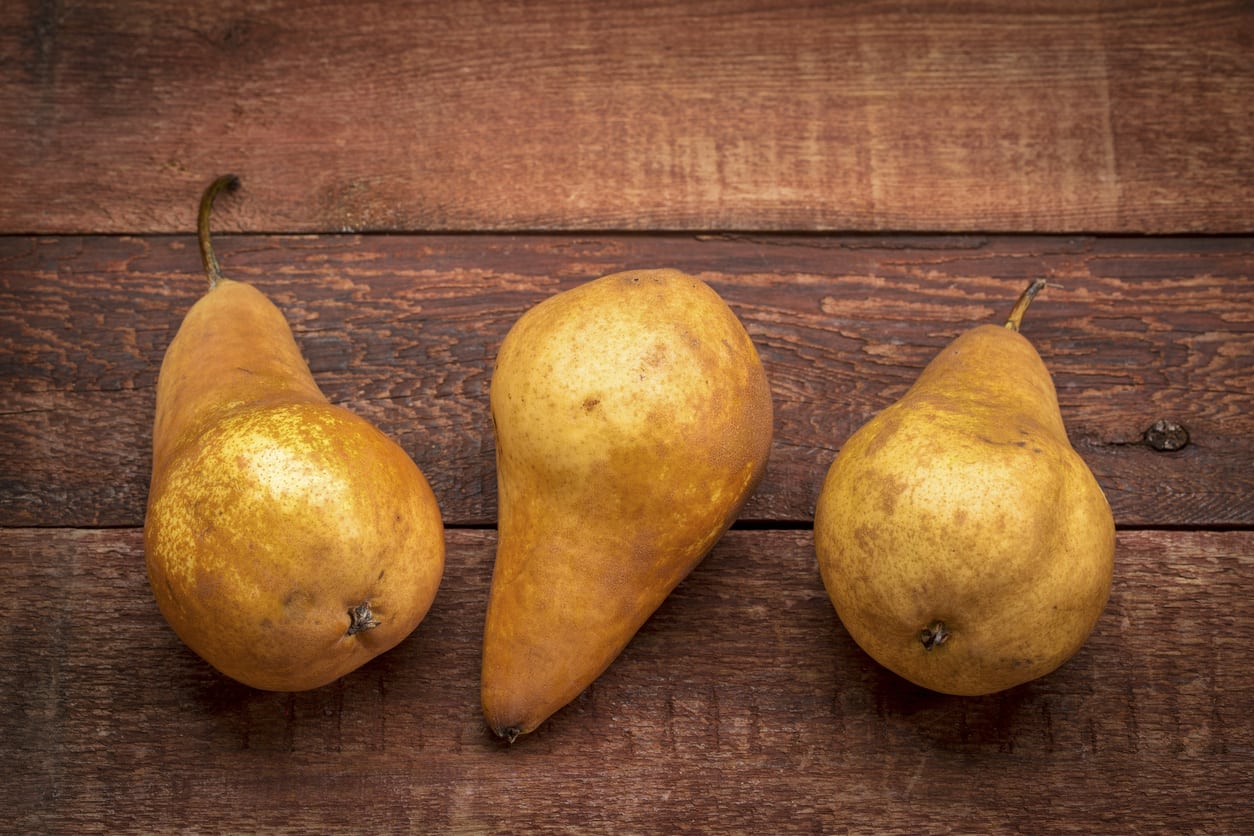Winter Pear Varieties: Growing Winter Pears In The Garden


There are two seasons of pear varieties: summer and winter. Winter pear varieties require cold storage before they can start ripening while summer pears do not. One reason for growing winter pears is their long life of storage. Unlike summer/fall pears, which ripen after being harvested, winter pears need cold storage for at least three weeks before bringing them out and letting them ripen. According to winter pear information, without this step, the fruits will not mature properly.
What is a Winter Pear?
Sweet juicy pears are one of the few fruits that do not ripen on the tree. Since they ripen from the inside out, by the time they reach perfect readiness on the tree, as judged by the eye, the centers would be mushy. For this reason, winter pears are picked when hard and green, stored in a cool location, and then placed in a warmer place to finish ripening. Winter pears are so named because of when they are marketed, although they are ready for harvest a month or more after other varieties. Pears are members of the rose family and probably originate from Eurasia. Winter pears are ready for harvesting in fall. They are then stored in refrigerators for three to four weeks at 32 to 40 degrees F. (0-4 C.) to allow the fruit to convert starches to sugars. The variety was a favorite with aristocratic French who developed several of the most popular kinds of winter pear. Bosc, D'Anjou, and Comice are all French varieties still grown today. Add in the following and you have the most popular winter pear varieties commercially grown:
Growing Winter Pears
Pear trees are grafted onto rootstock that conveys certain traits such as disease resistance, cold tolerance, and even size. Pear trees prefer temperate regions in full sun with average, well-draining soil. Trees will benefit from judicious pruning in late winter to spring for the first few years to develop a healthy vase-like shape and strong scaffold branches to hold heavy yields. Young trees should be trained to a thick stake initially to keep the central leader straight and true. Fertilize trees in early spring and prune out dead or diseased wood as needed. Growing winter pears is not for the impatient. It can take 20 years or more from planting for your first crops but, boy, is it worth it.
Gardening tips, videos, info and more delivered right to your inbox!
Sign up for the Gardening Know How newsletter today and receive a free copy of our e-book "How to Grow Delicious Tomatoes".

Bonnie Grant is a professional landscaper with a Certification in Urban Gardening. She has been gardening and writing for 15 years. A former professional chef, she has a passion for edible landscaping.
-
 Looking For Plants To Give You The Soft And Fuzzies? Try These 5 Fuzzy Leaf Plant Options
Looking For Plants To Give You The Soft And Fuzzies? Try These 5 Fuzzy Leaf Plant OptionsLovers of texture, drama, silver foliage and tactile plants will adore these special sensory garden additions. These fuzzy leaf plant options will leave you all aglow
By Susan Albert
-
 Get Ready For A Summer Of Hummers! Grow These Full Sun Hummingbird Plants and Flowers
Get Ready For A Summer Of Hummers! Grow These Full Sun Hummingbird Plants and FlowersIf you’re lucky enough to enjoy a sunny backyard, make sure you are maxing out on your pollinator opportunities and grow these full sun hummingbird plants and flowers
By Tonya Barnett